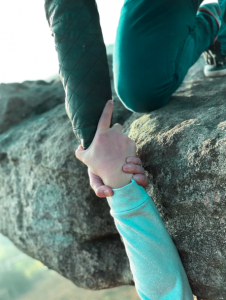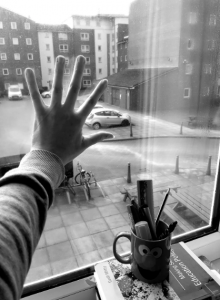Using photography as an inclusive approach to hearing students’ voices
At the University of Manchester Teaching and Learning Conference held in July 2023, Heather and Zhuomin presented findings from their project exploring how postgraduate students used photographs to explore and present their experiences while here at UoM.
They have kindly written up their presentation as a blog and resource, found below:
Our project explored postgraduate students’ reflections on their higher education experience here at UoM during the Covid-19 pandemic. We asked students to take photographs (or to select from photographs taken by themselves) that showcased their learning experiences here at UoM. Each student was asked to submit one photograph, along with a maximum of 100 words of written text, including a title and a description of the photographic image. These were then posted to a Padlet space that was available to students and staff working on the programmes to view.
An example of a submission can be seen below:

Student image 1
Title of image – You will never walk alone
This student highlighted that although “our learning journey at MA is our individual responsibility and challenge that we should overcome, this does not mean that we should walk alone all the way”. They discussed the connections they made during their postgraduate study.
It is often noted in research that the physical campus space features heavily in the student experience, and that the experience of campus and the wider sociocultural space is often a significant motivational factor when embarking on higher education study (Shkoler and Rabenu, 2022). However, what is often not clear is what students find important for creating their own sense of belonging in a new higher education environment.
Our project used photography (also seen as photovoice or participatory photography in research) as a method. The use of photography has often been considered as a tool in research to elicit and empower participants’ voices (see Gotschi et al., 2009; Wang and Burris, 1997). However, many such studies position photographs as visual tools to enable verbal insights, while the visual itself might not always be the focus of analysis. In our project we saw the photographs as not only a tool to gain verbal insights, but also as an imaginative, artistic space of knowing and as a legitimate source of knowledge (Huang, 2021). In doing so, we aim to develop an inclusive epistemic space for student voice and student knowledge by challenging the hierarchical norm of positioning (usually English) language as a privileged vehicle (Huang, 2022a) in producing and presenting knowledge. This inclusive stance of using photography was particularly important for our project where we worked with a large proportion of ‘international’ students in our cohort.
The students’ photographic insights about belonging are not confined by essentialist boundaries of their nationalities or student status, which might be foregrounded in the existing narratives about (‘international’) students and their experience in UK higher education (Jones, 2017; Huang, 2022). Instead, they reflect a humanistic, holistic sense making of students’ experience, in which the students are evident as agentive, confident, and capable of home-making and searching for belonging.
We understand belonging as developing connections, making homes, and fostering hope in a new environment. It influences academic performance, confidence, and wellbeing. We found that while students expressed a strong desire for embodied connections on campus through physical sites, people, and things, daily living activities like cooking and decorating also facilitated home-making and belonging. These elements, along with relationships and students’ wider experience beyond just the curriculum seem significant for belonging and this prompts questions for further research. Such as, what are the complexities and power dynamics in the landscape of developing a sense of belonging? What are students’ contributions in the ‘making’ of their new homes? How do students make sense of the links between their studies inside of our curriculum and their wider experience and search for belonging? What barriers to creating belonging may exist for our students?
Through using a more inclusive technique to elicit student knowledge, we provide an alternative to just the use of language, which can allow more students to generate knowledge about what is important for them while they are here at UoM.

Student image 2
Title of image: Trapped in person but not in mind
This student focused on experience as a student during the COVID pandemic. They highlighted how studying “from the space of a bedroom is challenging but possible”, but they felt that while campus restrictions were in place “being a student within society is impossible”.
More information and support available:
If you are interested in building student belonging and/or using a photographic approach with students, please get in touch with us:
- Heather Cockayne (heather.cockayne@manchester.ac.uk)
- Zhuomin Huang (zhuomin.huang@manchester.ac.uk)
For more information about our project please see: Huang, Z.M. and Cockayne, H. (2023) ‘Searching for belonging: learning from students’ photographs about their higher education experiences’. London Review of Education, 21 (1), 27. DOI: https://doi.org/10.14324/LRE.21.1.27.
Please see our full dataset via https://photographicshowcase.wordpress.com/blog/
References
Jones, E. (2017). Problematising and reimagining the notion of ‘international student experience’. Studies in Higher Education, 42(5), 933-943.
Huang, Z. M. (2022). A critical understanding of students’ intercultural experience: non-essentialism and epistemic justice. Intercultural Education, 33(3), 247-263.
Huang, Z.M. and Cockayne, H. (2023) ‘Searching for belonging: learning from students’ photographs about their higher education experiences’. London Review of Education, 21 (1), 27.
Webster, H. (2022) Building Student Belonging. Available at: https://www.advance-he.ac.uk/news-and-views/building-student-belonging







0 Comments